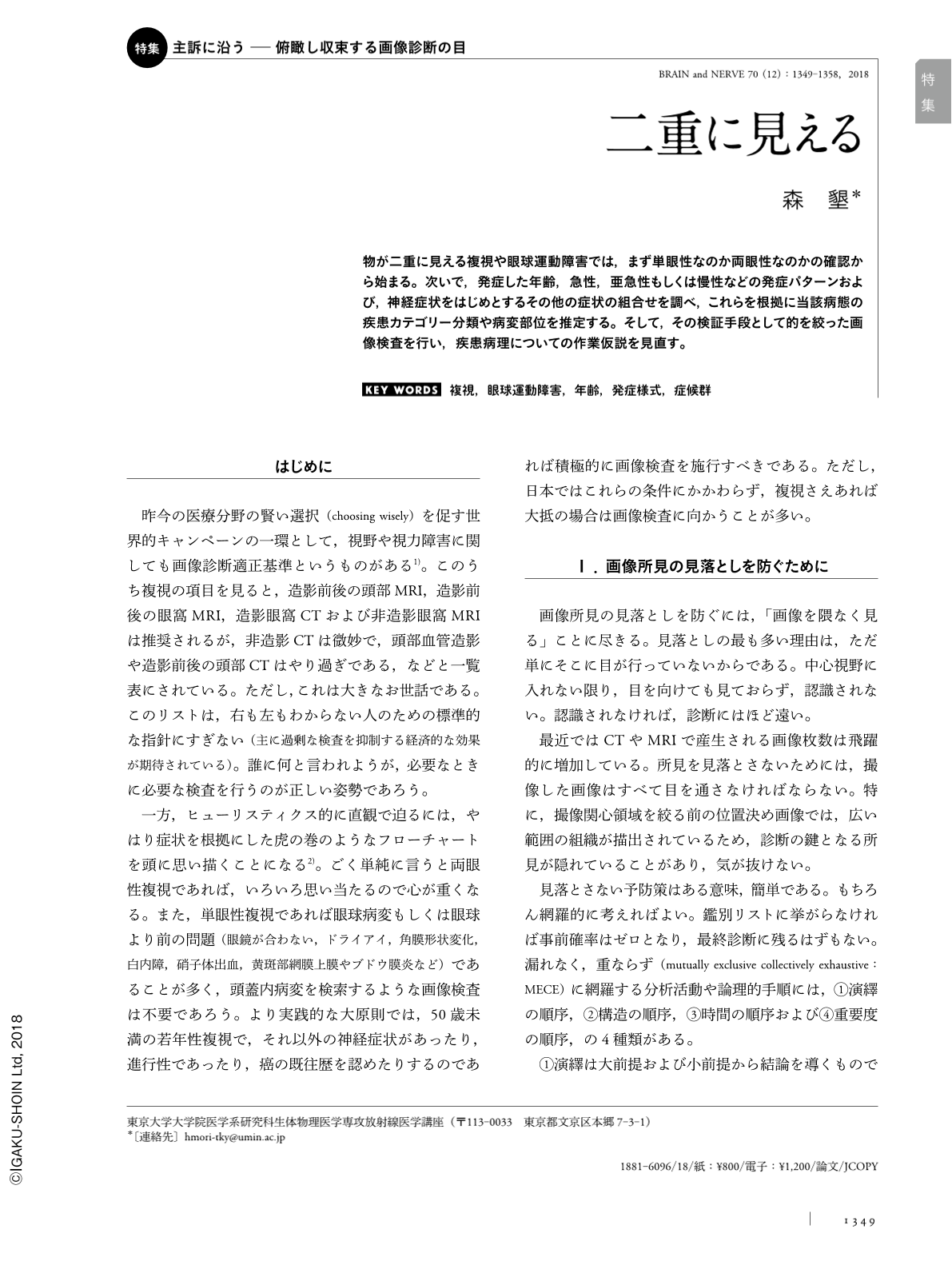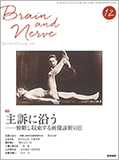Japanese
English
- 有料閲覧
- Abstract 文献概要
- 1ページ目 Look Inside
- 参考文献 Reference
物が二重に見える複視や眼球運動障害では,まず単眼性なのか両眼性なのかの確認から始まる。次いで,発症した年齢,急性,亜急性もしくは慢性などの発症パターンおよび,神経症状をはじめとするその他の症状の組合せを調べ,これらを根拠に当該病態の疾患カテゴリー分類や病変部位を推定する。そして,その検証手段として的を絞った画像検査を行い,疾患病理についての作業仮説を見直す。
Abstract
Here, I review the efficacy of radiological methods in the diagnosis of diplopia/double vision. The simplest technique for achieving a successful diagnosis is to capture a wide field-of-view image. In order to start the process of diagnosis, it is fundamental to first study the image findings. Analysis based on the principle of MECE or mutually exclusive collectively exhaustive is performed using four methods: deductive reasoning, fractionation, longitudinal study, and priority setting. The conventional practical procedure to attain a diagnosis is as follows. First, identify the location of the lesion by imaging, which will shorten the list of differential diagnosis. Second, obtain as much information as possible on the characteristics of the lesion in order to determine the pathology. Third, look for any associated findings, such as tortuous vasculature around the brain. Fourth, refer to all the available information; for example, the main complaint, clinical history, previous history, family history, physical findings, physiological findings, laboratory data, previous images, and other modalities. Finally, if still in doubt, one should consult with colleagues and the attending physician. However, because rationality (statistical analyses, such as posterior probability or positive predictive value with positive findings), predicted utility, and emotions play a factor in a person's decision making, it seems impossible to completely avoid oversights and misdiagnosis.

Copyright © 2018, Igaku-Shoin Ltd. All rights reserved.


